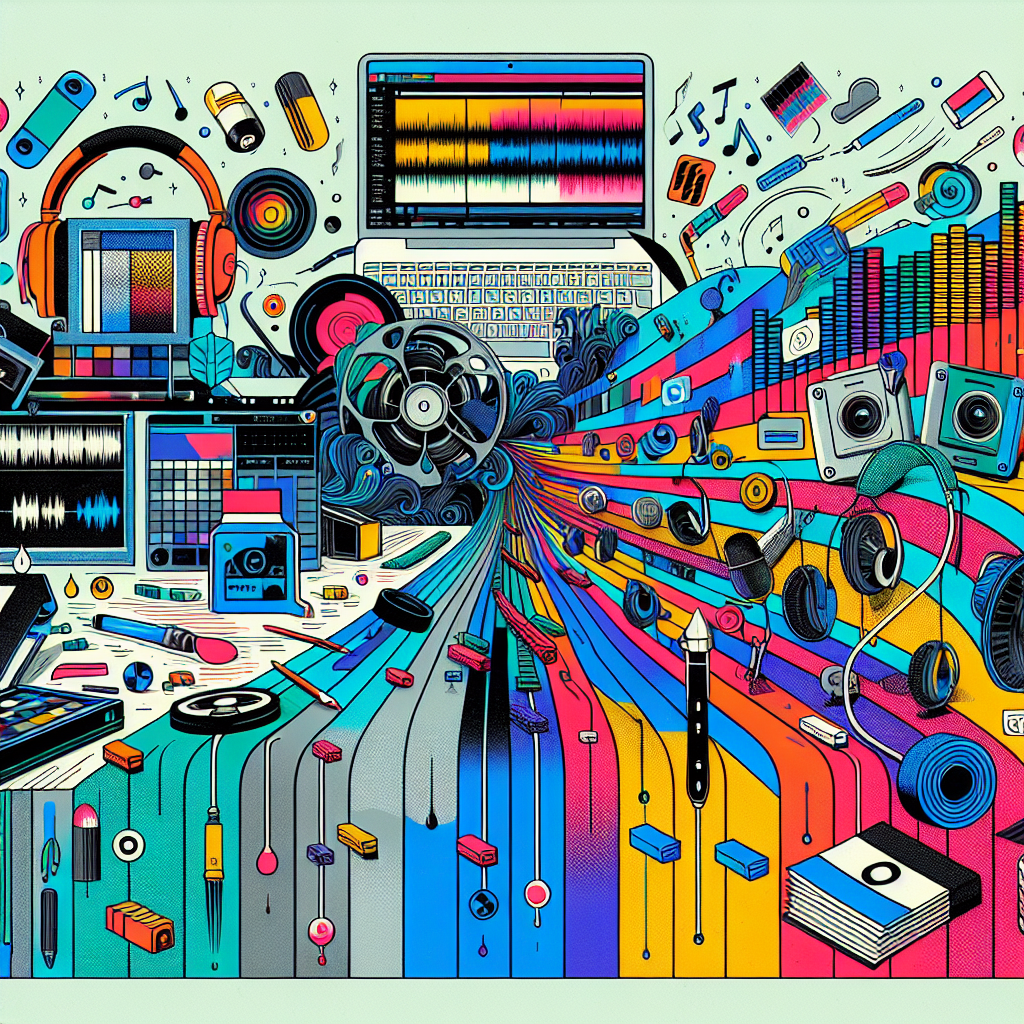Post-production is often considered the epitome of filmmaking. It is where raw footage is transformed into powerful and evocative storytelling. Whether it’s a full-length movie, a short film, or a brand advertisement – the magic happens in post-production. From careful curation of scenes to skillful sound editing to color correction techniques, post-production embodies a multitude of art forms that bring a project to life.
Post-Production Overview
Post-production primarily constitutes editing, sound design, color grading, and special effect integration. Editing, the first step, combines all captured footage in a cohesive way that translates the director’s vision on screen. The second process, sound design, adds audio elements to enhance emotion and provide context. The music, dialogue, and sound effects blended flawlessly can immerse the audience in the cinematic world. Color grading adjusts colors to shape the mood, while VFX and graphic designs are added lastly to create realistic, fictional universes.
The Art of Editing
Editing is often considered the “invisible art” in filmmaking. Through skillful alteration and organization of the shots, editors provoke emotions and shape the film’s pacing. This complex process requires both technical competencies and artistic intuition, transforming the narrative screenplay into a visual story. The cutting, transitioning, and assembling of scenes maintain the storyline’s continuity, coherence and, ultimately, its impact.
Sound Design and its Profound Impact
The importance of sound design is frequently underestimated. Sound elements – dialogue, music, and sound effects – enhance the visual, deepen the narrative, and immerse the audience in the film’s world. Good sound design can make a film feel ‘real,’ heightening the emotional experience, whereas poor sound design often leads to viewers losing interest in the film.
Color Grading: Painting the Screen
Color grading manipulates a film’s hues, saturation, and contrast to visually communicate tones and emotions. It’s like painting onto a moving canvas. Filmmakers can dramatically change an image’s mood and feel by adjusting color. Whether it’s a chilling blue for a horror scene or a warm glow for a romance, color grading sets the visual tone for the narrative.
The Visual Grandeur of Special Effects
Special effects (SFX) and visual effects (VFX) add elements to a film that cannot be captured naturally. With current advancements, VFX and SFX have revolutionized the filmmaking landscape, rendering it possible to create fantastical worlds, mesmerizing action scenes, and lifelike characters. They simply take storytelling to a different level.
Conclusion
Post-production is a creative marriage of various arts and technologies. It’s where the storytelling truly comes alive—with the right editing, impactful sound design, visually evocative color grading, and breathtaking special effects. It is indeed an invisible art that creates visible impacts, turning an ordinary narrative into a masterpiece. The magic of post-production is testament to the time-honored saying; In the realm of filmmaking, “the whole is greater than the sum of its parts.”
FAQs
- What do post-production teams do?
Post-production teams edit the footage, design sound, adjust color tones and add special effects to breathe life into the shot raw material. - How long does post-production take?
The post-production timeline varies greatly depending on the project’s complexity. It can take anywhere from a few weeks to several months. - Why is color grading important in filmmaking?
Color grading sets the visual tone for the narrative. It can influence the audience’s emotions and perceptions, highlighting the film’s mood and emotions. - What is the difference between VFX and SFX?
VFX, or visual effects, are digitally created and added to scenes in post-production. SFX, or special effects, are physical or practical effects taken during the shoot. - What role does sound design play in a film?
Sound design enhances the film’s visual narrative, deepens the narrative and immerses viewers in the film’s world. Good sound design can make a film more ‘real’ and emotionally engaging.

